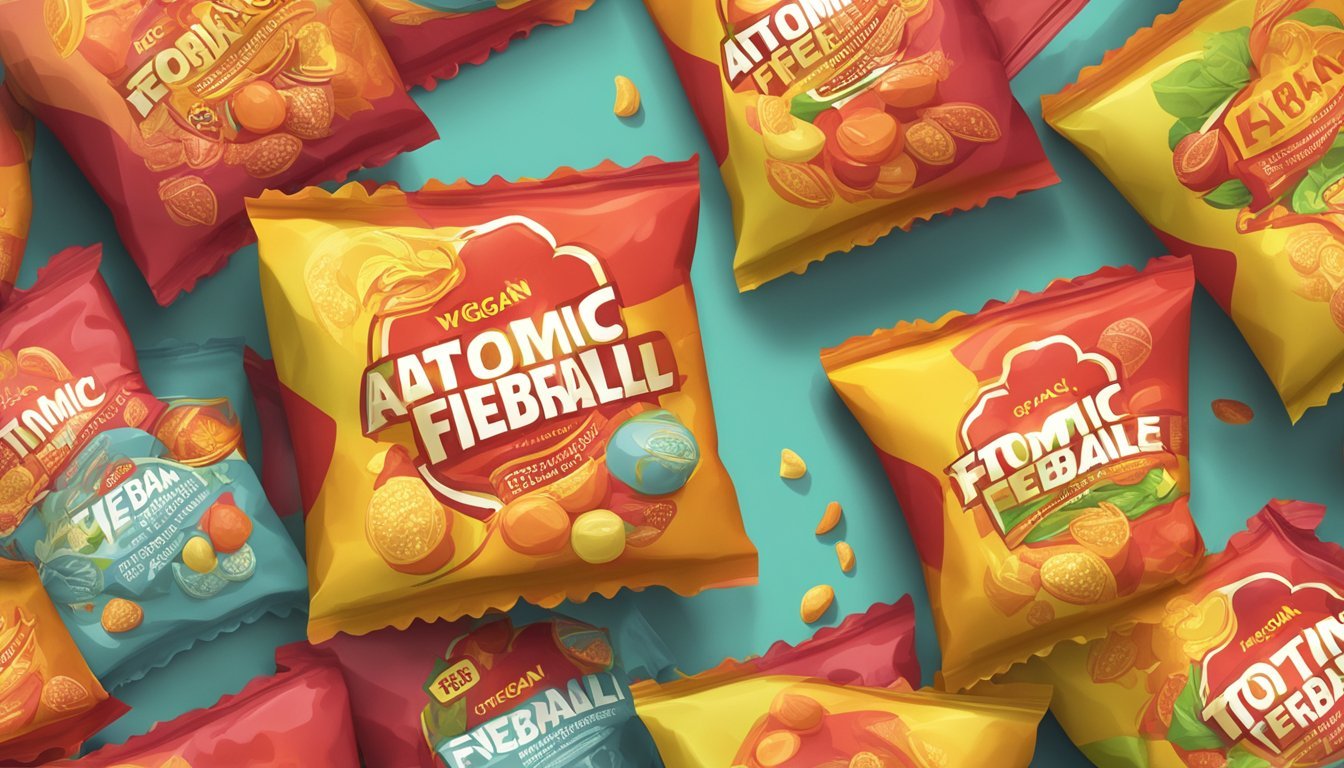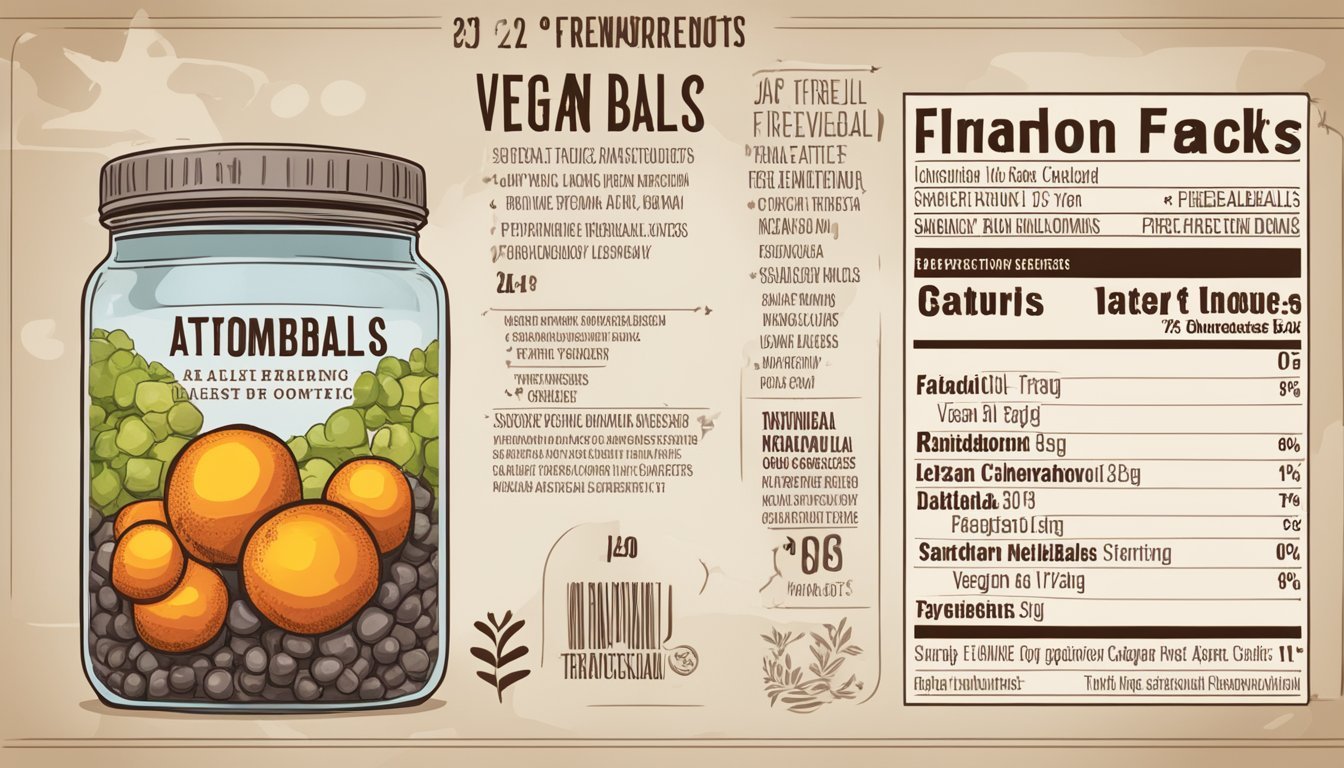Are Atomic Fireballs Vegan?
Unveiling the Ingredients
Atomic Fireballs are a popular spicy cinnamon-flavored candy that have been enjoyed by many since their creation in 1954. With the rise of plant-based diets, vegans are often on the lookout for sweets that align with their dietary choices. It's important to determine whether these nostalgic treats fit into a vegan lifestyle.
Upon examining the ingredients of Atomic Fireballs, it becomes apparent that they do not contain any animal-derived components, which suggests that they are suitable for those following a strict vegan diet. The main ingredients typically include sugar, artificial flavoring, and coloring agents like Red 40. These elements are synthetically produced and do not come from animal sources.
The vegan status of Atomic Fireballs has been discussed in various articles and lists of vegan-friendly candies. Careful analysis of the candy's composition confirms that Atomic Fireballs are indeed vegan. However, some individuals may have concerns over certain elements like artificial colors, which some vegans choose to avoid due to ethical or health considerations. Despite these concerns, the general consensus remains that Atomic Fireballs can be categorised as vegan-friendly.
What Are Atomic Fireballs?
Atomic Fireballs are a cinnamon-flavored hard candy known for their fiery spice and intense taste, which have garnered a dedicated following since their inception.
History and Origin
The Atomic Fireball was created in 1954 by Nello Ferrara, the son of Salvatore Ferrara who founded the Ferrara Pan Candy Company. This candy was one of the first spicy and hot confectioneries to hit the market, successfully capitalizing on the novelty of heat-inducing sweets.
Ingredients Breakdown
The primary ingredients of Atomic Fireballs include:
Sugar: The main component that provides the sweetness to offset the spice.
Cinnamon Flavor: Gives the candy its signature heat.
Modified Food Starch: Used as a thickening agent.
Red 40: A synthetic dye that imparts the vibrant red color.
Titanium Dioxide: Often used for whitening and as a food additive.
Carnauba Wax: Provides a glossy finish to the candy.
Acacia (Gum Arabic): Used as a stabilizer.
Potential allergens or dietary restrictions, particularly surrounding Red 40, should be noted by consumers.
Sensational Experience
Atomic Fireballs deliver a unique eating experience. The candy initially presents a sweet taste, which swiftly evolves into a spicy and sour sensation that is both intense and lasting. The heat level is sometimes described in Scoville heat units, akin to those used to measure the hotness of peppers like the jalapeño. Capsaicin is the heat-generating compound found in chili peppers, but Atomic Fireballs mimic this effect using cinnamon flavor instead of the compound itself, creating a burning sensation without the presence of capsaicin.
Vegan Considerations
When assessing whether Atomic Fireballs are suitable for vegans, several ingredients and labeling practices merit attention. This section highlights the controversial components that may conflict with a vegan lifestyle, explores vegan-friendly alternatives to Atomic Fireballs, and discusses the significance of vegan labeling for confections.
Controversial Ingredients
Atomic Fireballs contain ingredients that may raise concerns for those following a vegan diet. Red 40 Lake, an artificial color, is often tested on animals, though it does not contain animal ingredients itself. Some vegans may avoid it based on the possibility of animal testing. Cane sugar, another primary ingredient, can be processed with bone char from animal bones, which makes it a point of contention. However, the manufacturer does not explicitly state whether they use bone char in their sugar processing.
Artificial Flavors & Colors: Can be tested on animals.
Cane Sugar: May be processed with bone char.
Vegan-Friendly Alternatives
For vegans seeking candies without the controversial elements found in Atomic Fireballs, several vegan-friendly options exist. Skittles, Dots, and Jolly Rancher primarily use synthetic or plant-based colors and flavors and do not list any animal-derived ingredients. Jujubes, Swedish Fish, and Sour Patch Kids are also popular sweets recognized by PETA as vegan-friendly alternatives.
Cruelty-Free Sweet Options: Skittles, Dots, Jolly Rancher.
PETA-Approved Vegan Candies: Jujubes, Swedish Fish, Sour Patch Kids.
Vegan Labeling
Labels are crucial for vegans to identify foods that align with their dietary choices. While Atomic Fireballs do not contain explicit animal ingredients like gelatin, milk, or eggs, and do not use carmine or chocolate which are common non-vegan additives, the absence of a certified vegan label means that vegans must determine the acceptability of this candy based on individual standards for ingredients and processing methods.
Vegan Certifications: Help consumers quickly identify vegan products.
Lack of Certifications: Requires individuals to assess ingredient lists and company practices.
Health and Nutrition
Atomic Fireballs, a popular hard candy, has specific nutritional aspects and raises common health concerns due to its ingredients. Consumers should be aware of the caloric content and types of ingredients these candies are made from.
Caloric and Nutritional Content
The principal ingredient in Atomic Fireballs is sugar, which contributes to their high calorie count. A single serving of Atomic Fireball candy typically contains:
Calories: Approximately 50 per piece
Total Fat: 0g
Sodium: 0mg
Total Carbohydrates: 17g
Dietary Fiber: 0g
Sugars: 14g
Protein: 0g
Artificial flavor and color: Present but do not contribute to nutritional content
Common Health Concerns
The continuous consumption of high-sugar products like Atomic Fireballs can present various health concerns. The significant amount of sugar found in these candies may contribute to:
Dental problems: Such as cavities and tooth decay.
Weight gain: Linked to excess sugar intake.
Increased risk of chronic health issues: Like type 2 diabetes and heart disease.
The presence of artificial colors and flavors is also a matter of discussion for some consumers. Some individuals may be sensitive or allergic to these additives, and concerns have been raised about potential long-term health effects, although widely used artificial ingredients are approved by food safety authorities.
Manufacturing and Production
In the production of Atomic Fireballs, the focus is on the specific processes and materials used, including the importance of sourcing and ingredient selection. Ethical considerations are also taken into account, particularly when it comes to ingredients derived from plants or other natural sources.
Process Overview
The manufacturing process for Atomic Fireballs, a type of jawbreaker candy, closely follows traditional methods used in confectionery. These spherical candies are created by repeatedly coating a core with layers of flavoring and colorants. The original recipe, developed in Chicago, incorporates a mixture of sugar, possibly derived from cane sugar, modified food starch (corn), and various flavorings and colorings. These ingredients are heated and meticulously applied to create the fiery hard candy that is known for its gradual reveal of spiciness.
Variances in production may include:
Sweeteners: Use of cane sugar or corn syrup.
Colorations: Inclusion of titanium dioxide.
Flavorings: Original spicy flavor profile.
Ethical Sourcing
When it comes to sourcing ingredients for Atomic Fireballs, ethical considerations play a role, particularly with plant-derived components like titanium dioxide which is used for color. Manufacturers aim to ensure that these ingredients are secured through responsible channels that do not exploit labor or the environment. However, the complete transparency of the supply chain for ingredients like sugar is often challenging to guarantee, and production might occur on shared equipment, suggesting that cross-contamination with non-vegan products could occur, raising concerns for strict vegans.
Key considerations include:
Plant-Based Ingredients: Preference for responsibly farmed cane sugar and corn-derived products.
Cross-Contamination: Awareness of shared facilities in the confectionery industry.
Colorants: Use of titanium dioxide must comply with ethical sourcing standards.
Consumer Information
The Atomic Fireball, a vegan-friendly cinnamon candy, poses considerations for consumers regarding availability and dietary constraints. It's crucial to assess not only where to purchase but also to determine if it aligns with specific dietary requirements.
Where to Buy
Atomic Fireballs can be purchased across various platforms and physical locations. They're widely available online on e-commerce platforms like Amazon, making them easily accessible to a broad audience. Additionally, consumers can find Atomic Fireballs at local confectionery stores, supermarkets, and occasionally at movie theater concession stands.
Online: Amazon
Physical Locations:
Local Confectionery Stores
Supermarkets
Movie Theaters
Allergen and Dietary Restrictions
When considering allergen and dietary restrictions, it is essential to note that Atomic Fireballs are free from many common allergens. They do not contain milk, eggs, tree nuts, peanuts, or soy. Moreover, their gluten-free status caters to those with gluten intolerances or celiac disease.
Allergens:
Milk: Not present
Eggs: Not present
Tree Nuts: Not present
Peanuts: Not present
Soy: Not present
Gluten-Free: Yes
Consumers with other specific dietary restrictions or severe allergies should always check the packaging for the most current ingredient and manufacturing information as formulas and processing facilities can change.
Comparison with Other Candies
When evaluating whether Atomic Fireballs are vegan, it is useful to compare their ingredients to those of other candies that may or may not be vegan-friendly. This comparison can provide insight into how the Atomic Fireballs stack up against similarly positioned products on the market.
Similar Candy Profiles
Nerds: These small, tangy candies are considered vegan as they do not contain any animal-derived ingredients. However, some vegans may avoid Nerds due to the potential cross-contamination with non-vegan confectionery products during manufacturing.
Smarties (U.S. version): Smarties in the United States are distinctly different from their Canadian and U.K. counterparts, which are milk chocolate. U.S. Smarties are vegan-friendly; they are free from animal-derived ingredients, aligning closely with the vegan profile of Atomic Fireballs.
Pixy Stix: These are simply flavored sugar packed in a straw-like wrapper. As they do not contain ingredients of animal origin, Pixy Stix share a similar candy profile to Atomic Fireballs, being another vegan option.
Alternative Vegan Sweets
Oreos: Although Oreos are not marketed as vegan, they do not contain any animal-derived ingredients, making them a popular alternative sweet for those following a vegan diet.
Twizzlers: This licorice candy is usually considered vegan, as it does not contain gelatin or other common non-vegan confectionery ingredients. Twizzlers provide another alternative for those seeking sweets without animal products.
Jolly Rancher Lollipops: While some Jolly Rancher products may not be vegan due to the inclusion of gelatin, their lollipops do not contain this ingredient, making them a potential vegan sweet alternative, although individuals should check for the latest ingredient information.
Airheads: Vegan-friendly, Airheads do not contain animal-derived ingredients, aligning them with Atomic Fireballs as an option for those avoiding animal products in their candy consumption.
Notably, some candies like Starburst are non-vegan as they typically contain gelatin, an animal derivative, which is a significant differentiating factor when compared to vegan candies like Atomic Fireballs. It is always recommended for consumers to check the most current ingredient lists, as manufacturers can change formulations.







